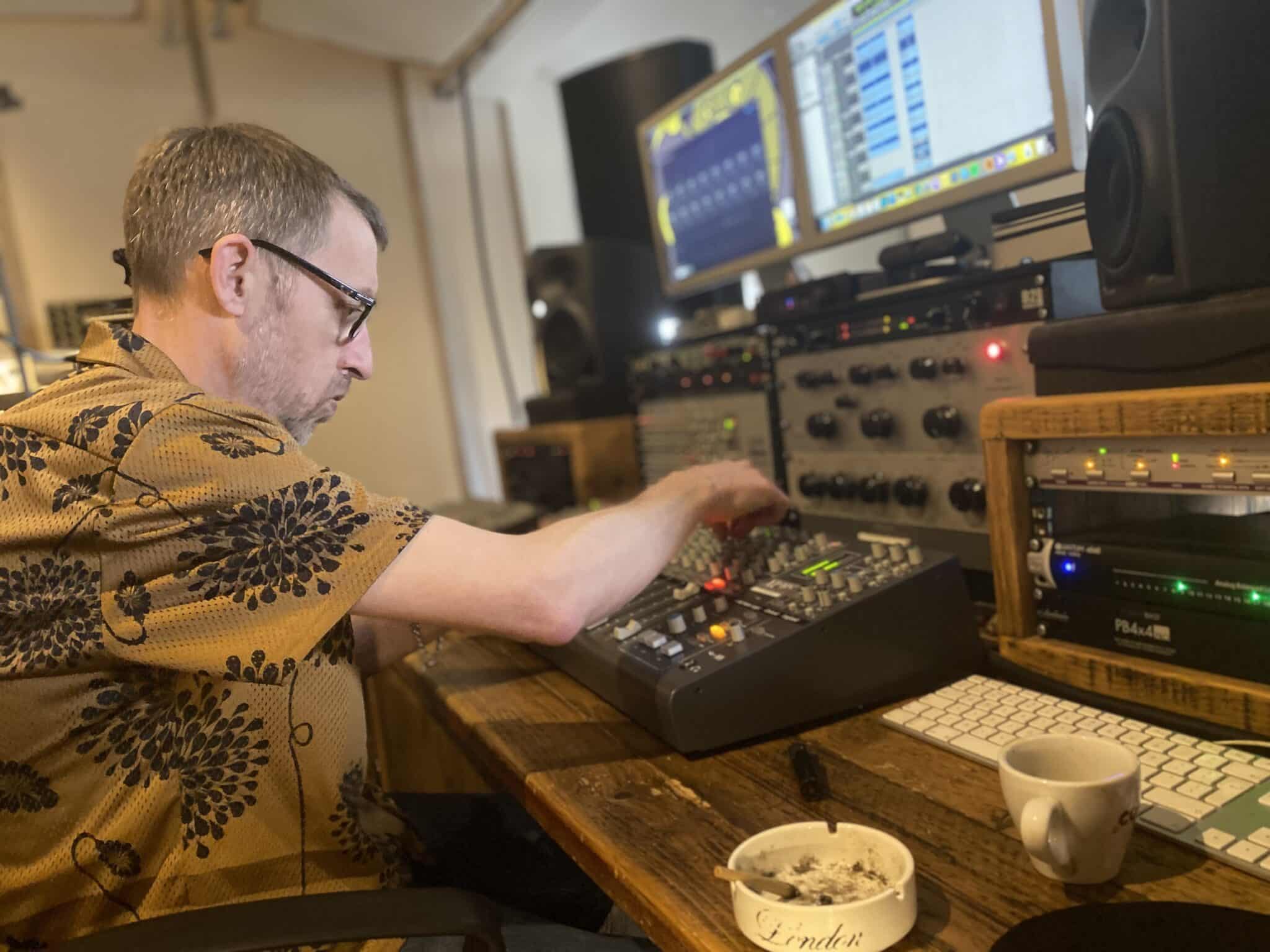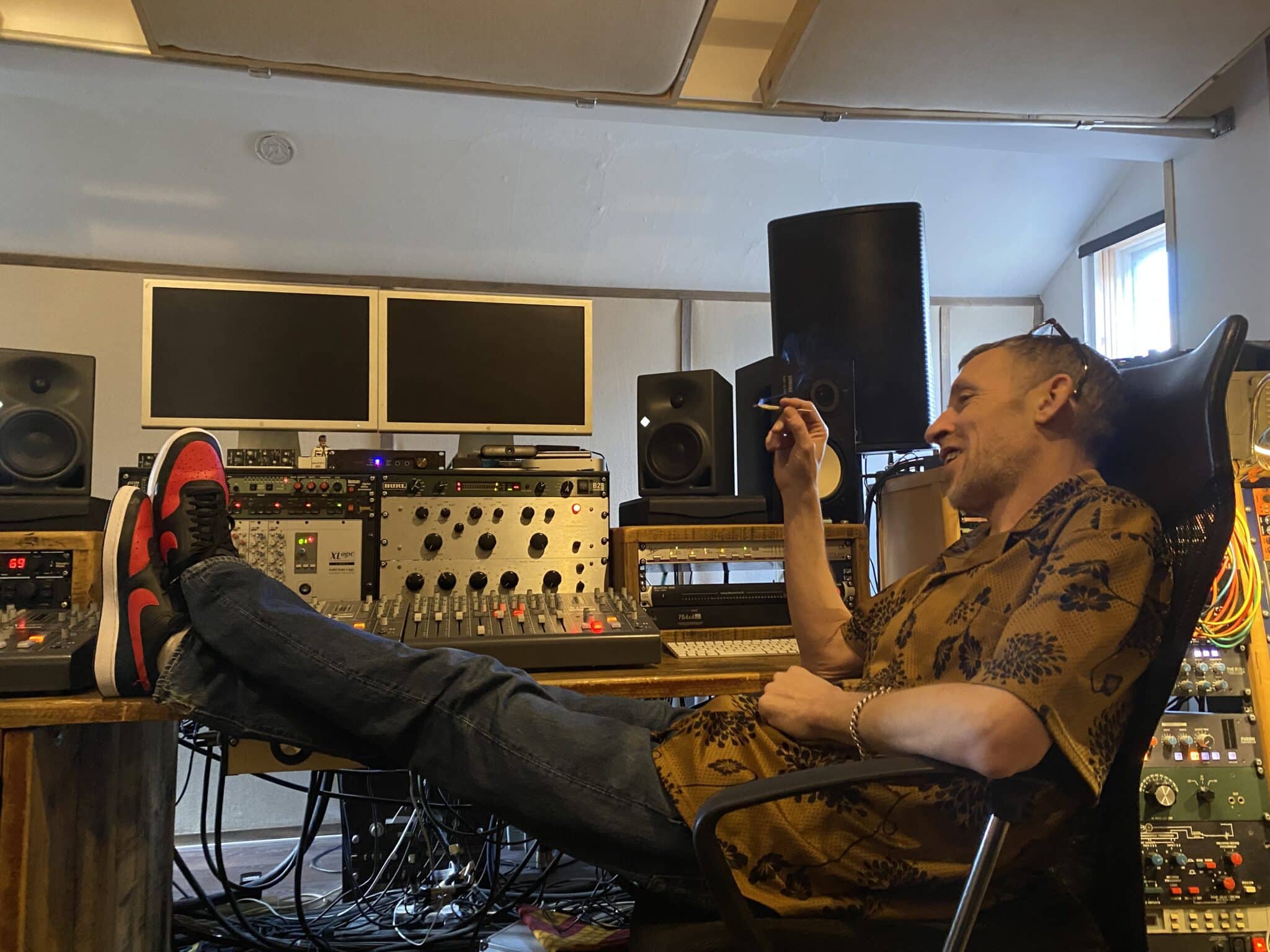Prince Fatty Meets The Gorgon In Dub
The mixes created at King Tubby’s studio by Phillip Smart, Prince Jammy, Scientist and the King himself during the golden age of dub in the 1970s were pioneering explorations of the audio soundscape. Many have achieved sacred status in the five decades since their creation. Their achievements are best understood within the technological context of the era – real time mixes made typically from four audio channels with varying combinations of rhythm instruments, drums, bass, horns, and vocals. This was the basic palette of the mixing engineer. From there, each channel could be added, subtracted (muted), isolated (soloed), or treated with any degree of echo, reverb, phasing, high or low pass filters that the outboard gear could accommodate.

Credit: Adam Prescott
In the modern era, for better (but mostly for worse), anyone can create a mashup, a remix, or a dub using a digital audio workstation, AI stem separation, and digital signal processing that even emulates the outboard gear at nearly any now famous studio, including King Tubby’s.
During his lifetime, Bunny Lee was always up for new interpretations of his work, and many producers and engineers have taken a shot at new mixes. There is always the risk of sounding anachronistic with a contemporary remix, but when it comes to artistic judgment in remix engineering, few compare of Mike Pelanconi, better known as Prince Fatty.
Throughout his career and particularly on his incredible production work for Hollie Cook a decade ago, Prince Fatty manifests the kind of perfectionism that Tubby himself valued. Fatty’s new studio in London is an homage to analog settings of the original Dub Master. He breaks down his equipment as follows: “It’s a unique system as I mix down into late 60s Pultec SP3 and Pultec MH4 tube mixers combined with SSL desk, SSL Fusion, SSL Bus Plus Compressor. Chiswick Reach Vari-Mu tube compressor. The effects are processed on a Fairchild 659 Spring Reverb, Orban 106-C Spring Reverb, Custom Prince Fatty Spring Reverb, Fisher Space Expander Tube Spring Reverb, Rodec – Stereo Filter, Akai MFC-42 Stereo Filter, Altec 9069 Filter, and Urei Filters. The echo was done traditionally, using a tape machine and a Lexicon PCM41 for delays.”
Presented with a carefully selected set of 24-bit 4-track transfers from the Bunny Lee archives, Prince Fatty fed the multi-tracks into the analog realm for mixing through the signal chain outlined above, and then to an Otari MTR-12 reel-to-reel tape machine running at 15 inches per second, essentially the same way the masters did it in the 1970s, minus the source digital stages. The digital sources allowed Fatty more liberty to create edits where he felt they made sense.

Credit: Adam Prescott
“These are classics songs, we all know the arrangements inside out, so to me it’s nicer and fresher to hear a new structure … I’ve had a lot of fun with this and it’s been very educational for me. To hear the quality, not just of the musicianship, but the engineering is spectacular.
“The personalities of all the characters involved, I think that is underestimated. People always talk about the equipment or the tape machine or the mixing desk, but I defy anyone to sound like the Aggrovators. Many have tried, but I’ve yet to hear anyone do it. For me the Aggrovators rule supreme. The fact that I’ve actually been working on material featuring the Aggrovators is nuts. The most stubborn, sticky, unorthodox rhythm section, period. That’s what’s beautiful about all these recordings. The personality is just jumping out of the speakers. Hearing the vocals in isolation just makes the hair on my arms stand up.”
The original Bunny Striker Lee riddim tracks include Linval Thompson’s “Jah Jah A The Conqueror” edited with Tommy McCook’s instrumental arrangement of the same; Jackie Edwards “The Invasion,” originally by Burning Spear; Cornel Campbell’s “Press Along,” Horace Andy’s “Don’t Try To Use Me,” Ronnie Davis’ “Sun Is Shining,” originally by Bob Marley; Barry Brown’s “Give Thanks & Praise,” Rod Taylor’s “Garden Of Eden,” Neville Brown’s “Prophesy” (a.k.a. “The Right Time”), the instrumental track also known for Don Carlos’ “Late Night Blues,” Leroy Smart’s “No Love,” the instrumental also known for Horace Andy’s “Zion Gate”; and Don Carlos’ “Ababajonoi,” which derives from Jackie Mittoo and Vin Gordon’s “Real Rock” instrumental.
—Carter Van Pelt, May 2023
***
Enter here for a chance to win Prince Fatty’s “Prince Fatty Meets The Gorgon In Dub” LP!
Contest ends Friday December 1st @ 11:59 pm PT.
Winner will be notified via email from [email protected]. VP Records will ship to addresses across the globe. Winner may be responsible for import duties in your country if applicable.
